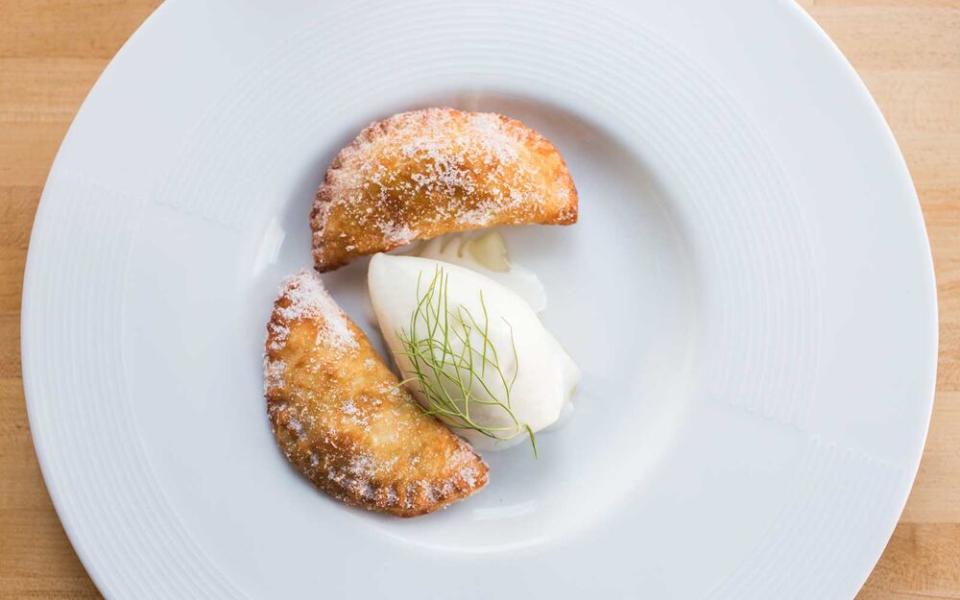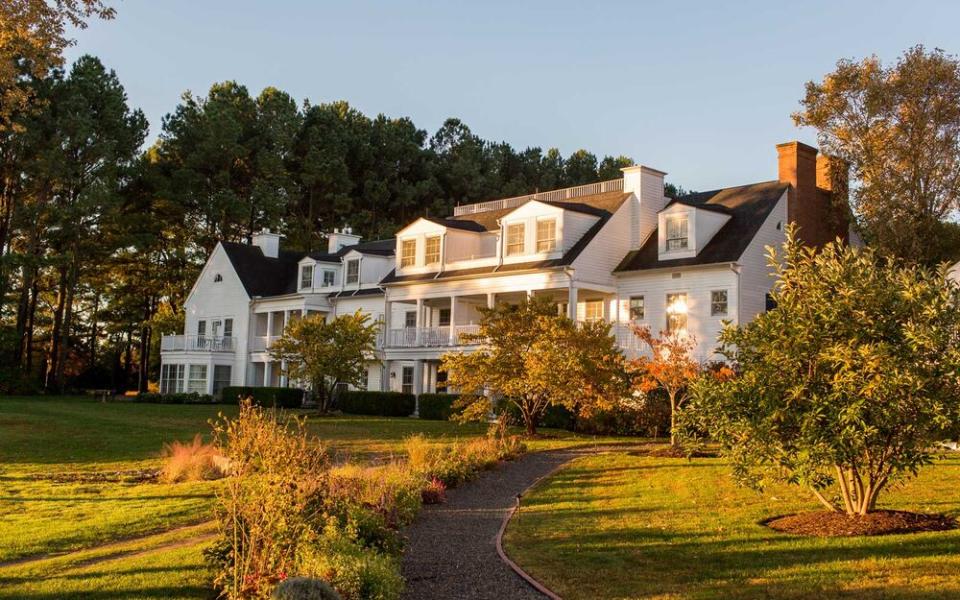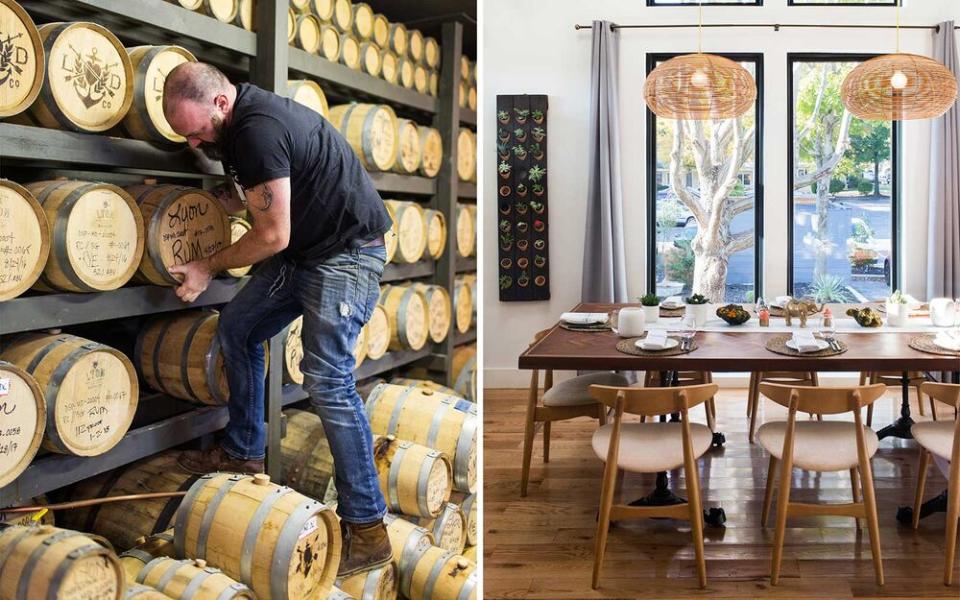A Three-day Eating and Drinking Tour on the Chesapeake Bay
In James Michener's epic 1978 novel "Chesapeake," a 16th-century Susquehannock named Pentaquod rows across the titular bay and wonders at "the immensity of this water, the way the fish jumped as if they were eager to be caught and tasted." Nearly 500 years later, the Chesapeake Bay — the bountiful estuary that bisects the state of Maryland — still ranks among the country's wonders and is the source of one of its most underappreciated cuisines.
About 30 miles outside the nation's capital, you hit the Eastern Shore, where rivers and inlets scallop the bay's edge, contributing to a shoreline longer than all of Florida's. Some of the waterfront towns are still centered on fishing, boatbuilding, and canning. Until recently, however, the ecosystem Michener described was in danger of total collapse. By the 1970s, industrial farming and deforestation had polluted the area, drastically depleting marine species. Thanks to a decades-long cleanup effort, however, this once damaged body of water is beginning to flourish again.
And as the bay is replenished, its food is reaching a new audience. Encompassing much more than just steamed crab and Old Bay — though they are everywhere, and delicious — Chesapeake cuisine can be traced to an enduring indigenous influence, as well as the recipes of enslaved Africans and seafaring settlers. Now influential chefs — including Spike Gjerde of Baltimore's Woodberry Kitchen and Jeremiah Langhorne at the Dabney, in D.C. — are preaching the Chesapeake gospel.
Last October, I traveled to the area to experience the place — and its food — for myself.

Friday
I began in Annapolis, which should be a stop on any trip to eastern Maryland, and quickly realized that there's more to the city than the famous naval academy. History is everywhere you look: colonial-era taverns, 19th-century churches, the statehouse where the Treaty of Paris was ratified. But there's also a lot that is new, like the stylish, recently opened restaurants I passed as I walked down the red-brick Main Street leading to Annapolis Harbor. I dropped in for lunch at Preserve, a restaurant and pickling operation run by Jeremy Hoffman, an alum of New York City's Per Se, and his wife, Michelle, formerly of Union Square Café. The menu reinvents Maryland mainstays: dishes include fish-and-chips, with the cod switched out for tempura catfish, and buffalo-style soft-shell crab. Follow the street down to the waterfront and you'll come to the 160-year-old Market House, which has a new food hall and grocery packed with purveyors of local goods such as cider, seasoning mix, and fresh-from-the-bay oysters.
Nearby, the burgeoning Arts District is home to the city's best galleries, as well as the delightful Sailor Oyster Bar. I ordered an afternoon pick-me-up of crudo and smoked sardines with buttered bread. At the center of the neighborhood is the new Graduate Annapolis, the place to stay. It's the perfect distillation of this college town, with navy signal flags lining the lobby walls and a color scheme inspired by the colorful shell of the Chesapeake blue crab.
The Graduate is ideally situated for access to Annapolis's main attractions, the most delicious of which is Flamant, a new restaurant in a clapboard bungalow in a quiet residential neighborhood. There, Belgian-born chef Frederik De Pue, formerly of Washington, D.C.'s Table, creates updated versions of Flemish classics. I popped in as it began to rain and warmed up over a glass of Riesling and an ultra-cozy veal stew — served with Belgian pommes frites, of course.
Saturday
On the other side of the bay is the Eastern Shore of Maryland — part of the so-called Delmarva Peninsula, which stretches down to the spits and islands of Virginia's easternmost counties. For many visitors, getting there involves crossing the Chesapeake Bay Bridge, which is notorious for its mile-long backups and disgruntled drivers.
But the 78-room Inn at Perry Cabin, where I was to spend the night, provides an out. On a crisp, bright morning, I made my way from Annapolis to Pier 7, in nearby Edgewater, to catch a transfer across the bay on the inn's 55-foot yacht. Out on the water, champagne in hand, I listened to the captain's account of the Chesapeake's history and geography — the various crumbling lighthouses, the sandy shoals, the sudden trenches. Beneath the boat were crabs, rockfish, oysters, dolphins, and even the occasional shark, all evidence of the ecosystem's gradual restoration.
About an hour later, we pulled in to the Miles River, one of the bay's many freshwater tributaries. Perry Cabin is a stately presence on this calm inlet. Built by a wealthy War of 1812 navy veteran (and named in honor of his commander, Commodore Oliver Hazard Perry) the property was converted into a hotel in 1980. Though it has undergone several expansions — most recently, a golf course created by legendary designer Pete Dye — some historic elements remain, including the bust of Commodore Perry in the lobby.

Just off the property is St. Michaels, where Michener wrote his book. It's been a humming little port since the mid 1600s and has, again and again, played a key role in Maryland history. Its shipyards were instrumental during the War of 1812, and the town was the site of an important battle. Frederick Douglass covertly taught his peers to read and write while enslaved in a house just off Talbot Street.
St. Michaels is also a great introduction to the region's cuisine and culture. At Stars, Perry Cabin's formal dining room, chef Gregory Wiener highlights Chesapeake seafood and ingredients from the hotel garden. (If you want to dine even closer to the source, contact the boating concierge to arrange a rosé-and-oyster sailing.) Off campus, Eastern Shore native chef Doug Stewart turns out comforting dishes like crab cakes with succotash at Bistro St. Michaels, an inviting restaurant inside a century-old house.
In St. Michaels, happy hour revolves around the Old Mill District, a collection of repurposed warehouses about a mile from the inn. I stopped for a drink at Lyon Distilling Co., founded in 2012 by former bartender Jaime Windon. While she has been credited for the comeback of Maryland rye, Windon's personal favorite is rum, the first spirit ever distilled in Maryland.

Sunday
At Perry Cabin, the challenge is deciding in which direction to go exploring. Perhaps to the town of Easton, the area's restaurant epicenter? The team at local favorite Bas Rouge have opened a new restaurant, the Stewart, which has an impressive menu of scotches and a Parisian-inspired dessert shop called Bonheur. Or to one of the islands? There's Tilghman, where you can pick fresh oysters and crabs right out of the sand; Assateague, where wild horses roam; or Smith, home to the namesake many-layered cake.
In the end, I decided to take advantage of the inn's bike-rental service and rode to the nearby town of Bellevue to catch a boat across the Tred Avon River. The Oxford-Bellevue Ferry, which began operating in 1683, was saved from extinction by an enterprising local couple in 2002. The trip, complete with misty vistas, flocks of great blue herons, and calm, gray waters, is a bargain at $3 for a round-trip ticket.
On the other side is Oxford, one of the first permanent settlements on the Eastern Shore — though bands of Choptank Indians had long made their summer camps in the area. Here, the region's maritime history is palpable. Visit the tiny Oxford Museum to learn all about the canneries, shipyards, and oyster beds that kept this town afloat for centuries.
For a taste of the humble origins of Maryland cuisine, I dined at the 300-year-old Robert Morris Inn. At a fireside table in its brick-walled, timber-beamed tavern I fueled up on local classics like fried seafood, oyster pie, and oversize crab cakes with huge pieces of sweet meat. Simple, hearty, and fresh from the revitalized local waters, it felt like the spirit of the Chesapeake on a plate.
A version of this story first appeared in the November 2019 issue of Travel + Leisure under the headline Bay Watch. Inn at Perry Cabin provided support for the reporting of this story.
Correction: An earlier version of this story incorrectly identified Bas Rouge, in Easton, as having been nominated for a James Beard Award. We regret the error.

